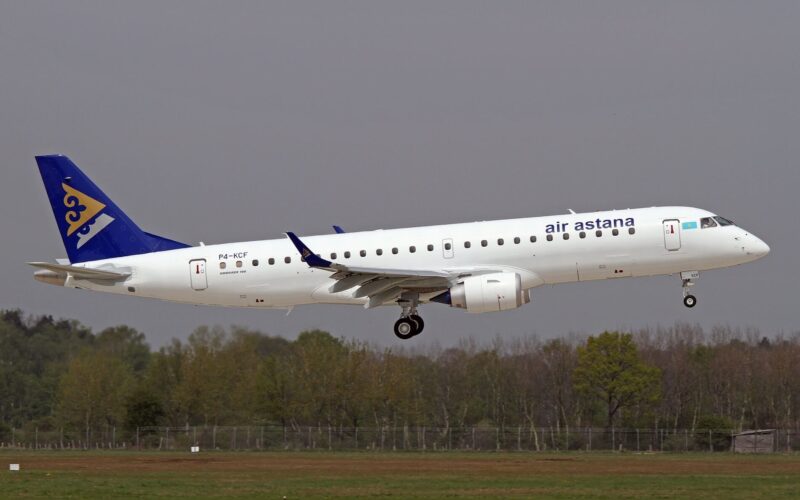Portuguese investigators released the final report of the chilling Air Astana E190 incident in November 2018. Back then, the regional jet became uncontrollable, forcing its pilots to not only issue a distress signal but also look for the nearest sea to ditch the plane. The investigators found out that the ailerons control was inverted following deficient maintenance work.
On November 11, 2018, an Air Astana Embraer ERJ-190LR jet, registered P4-KCJ, was carrying out flight KC-1388 from Alverca (AVR), Portugal, to Minsk (MSQ), Belarus. The plane was on its first post-maintenance flight from OGMA Maintenance Engineering (OGMA – Indústria Aeronáutica de Portugal S.A.) headquarters at Alverca military base. It was carrying three pilots and three technicians.
Shortly after climbing in adverse meteorologic conditions, the aircraft suffered instrument loss, displaying severe anomalies in flight speed and altitude.
The flight crew later said they had no effective control of the aircraft, as the E-jet was not responding adequately to inputs. There were no malfunction indications from the aircraft systems, only abnormal flight attitudes alerts.
Besides squawking 7700 (general emergency), pilots also requested several times headings for a possible “ditching” of the aircraft in the nearest body of water. “We need vectoring for the sea for ditching, away from the trees,” the captain informed ATC.
The pilots eventually managed to regain sufficient control of the jet after disabling the flight control module (FCM) and putting the flight controls into direct mode. While it did not resolve all the problems, as difficulties to control the aircraft roll-axis persisted, the solution helped to improve the situation considerably.
The flight requested to divert to the nearest airport with favorable weather conditions and were directed to Beja (BYJ), Portugal. The flight was escorted by two Portuguese F-16 fighter jets. After two unstabilized approaches, the aircraft successfully landed on its third attempt. Two of the occupants were taken to a hospital for minor injuries.
The investigation of the Portuguese Office for the Prevention and Investigation of Accidents in Civil Aviation and Rail (GPIAAF) determined that the incident occurred because of the improper aileron cable installation on both semi-wings during maintenance and inadequate quality assurance of the flight control systems, resulting in an inversion of the aircraft aileron control that led to the loss of control during flight.
As one of the contributing factors, the GPIAAF noted lapses in the aircraft’s design that made both the mistake during maintenance possible and its detection during return-to-service checks difficult.
Embraer, Air Astana, and OGMA have all taken corrective measures following the incident: Embraer revised its maintenance manuals, Air Astana updated the pre-flight checks for its pilots, and OGMA introduced an independent inspection team.
The GPIAAF issued additional safety recommendations. OGMA was required “to strengthen its system of production, quality, and supervisory control” and review the skills and competences of its technicians. As for Embraer, it was asked to establish “proper guidance material to support operators and maintenance organizations during the aircraft return to service phase, after a significant or heavy maintenance event”.

